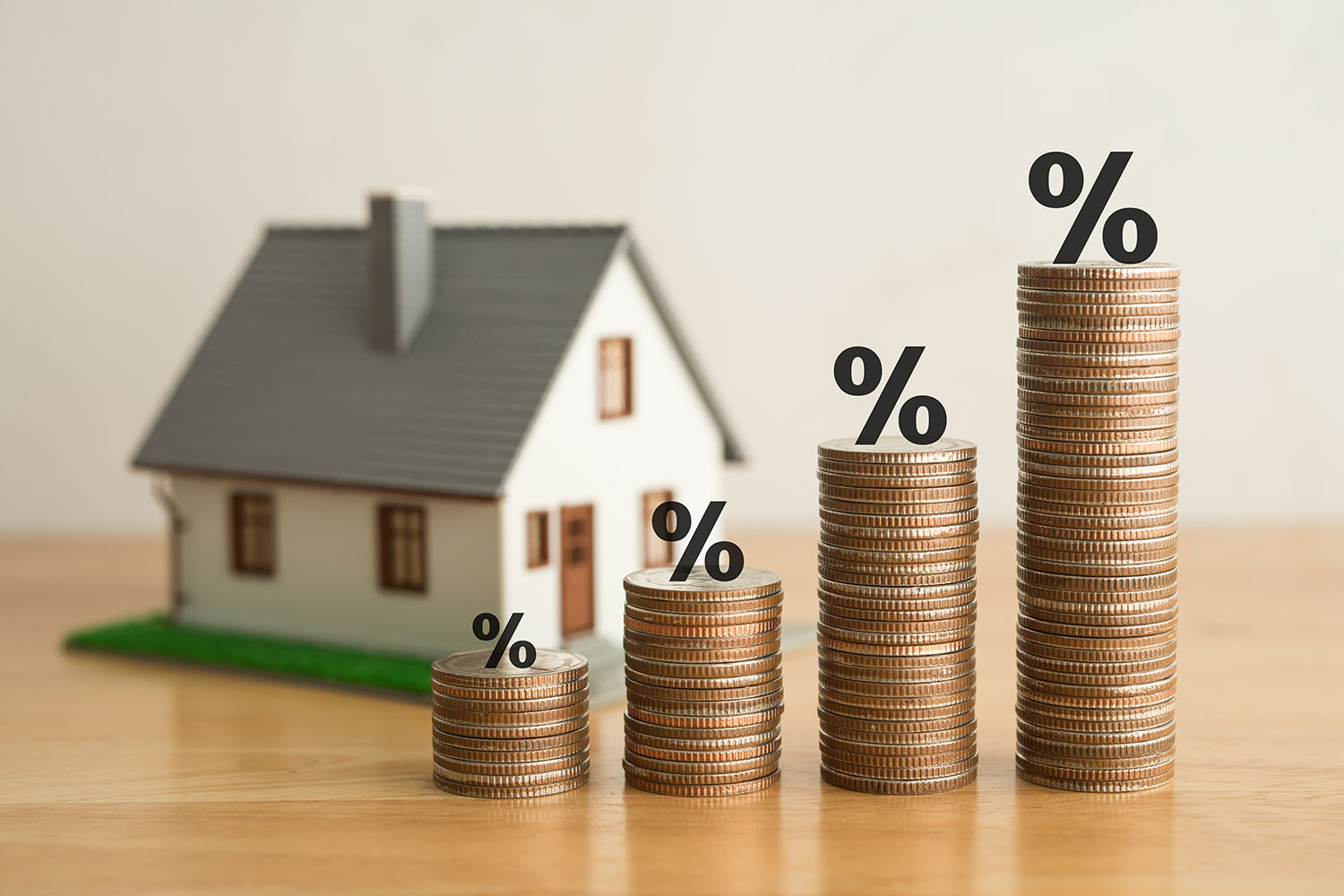Unlike your regular home insurance, which shields your property and assets from various perils and liabilities, private mortgage insurance serves a different purpose. It's designed to protect the lender if, for any reason, you default on your mortgage payments.
Yes, that means you’re still at risk of foreclosure if you fall behind on your mortgage obligations. While it does help reduce the initial costs of homeownership by allowing you to make a smaller down payment, private mortgage insurance has an impact on your monthly payments and, subsequently, the kind of property you can afford. Here’s a comprehensive breakdown of mortgage insurance and what you need to know.
When it comes to securing your dream home or refinancing a property, one of the significant hurdles you might face is the down payment. Traditional loans often require a substantial upfront payment, which, when combined with other homebuying expenses like closing costs and insurance, can become quite burdensome. But here’s the good news – mortgage lenders may be open to applications with lower down payments, particularly if you have a strong credit score. This opens the door to low or even no down payment home loans. However, there’s a catch with these attractive low down payment options. As borrowers contribute less upfront, mortgage lenders often insist on a safeguard – mortgage insurance.
When is Private Mortgage Insurance Necessary?
Most conventional mortgage lenders stipulate that borrowers acquire private mortgage insurance (PMI) when initiating a new mortgage. This requirement kicks in when your down payment falls below 20% of the property’s purchase price or when you’re refinancing a home with a loan-to-value ratio of less than 80%. Typically, the lender takes the reins in arranging PMI directly with their chosen provider, leaving borrowers with limited say in the process.
Government-backed home loans, like FHA loans, offer an accessible path to homeownership, with down payments as low as 3.5% of the purchase price. However, they mandate mortgage insurance with premiums paid directly to HUD/FHA. The premiums are typically divided into upfront mortgage insurance premiums, financed into the loan amount, and monthly mortgage insurance premiums included in your monthly mortgage payment.
Varieties of Mortgage Insurance
There exist different forms of mortgage insurance to consider:
Borrower-Paid Mortgage Insurance
This is the most common form where your mortgage insurance premiums are incorporated into your monthly mortgage bill alongside principal, interest, property taxes, and insurance. You can also opt to pay a lump sum for your mortgage insurance premium during the closing process, reducing your monthly payments. Keep in mind, though, that the single premium isn’t refundable if you refinance or sell the property before gaining enough equity to remove PMI.
Lender-Paid Mortgage Insurance
Less common but still an option, this route sees your mortgage lender covering your PMI. However, borrowers don’t get off scot-free; they will likely repay their mortgage insurance premium through higher interest rates or a heightened mortgage origination fee. While this approach lowers your upfront costs, you’ll end up paying the lender over the life of the loan. Moreover, lender-paid PMI is not refundable and can only be removed through refinancing or property sale. The perk? Monthly payments could sometimes still be lower than paying monthly PMI, despite the increased interest rates.
Understanding Mortgage Insurance Costs
Mortgage insurance doesn’t come with a fixed price tag. The cost varies, taking into account your loan amount, loan-to-value ratio, and credit score. On average, you can expect to pay anywhere from 0.22% to 2.25% of your total mortgage amount. To put this into perspective, data from Freddie Mac suggests that most borrowers typically pay between $30 and $70 per month for Mortgage Insurance Premium (MIP) for every $100,000 borrowed.
Crucially, it’s worth noting that it’s typically the mortgage lenders who choose the most cost-effective mortgage insurance provider for their borrowers. Your pocket-friendly provider may differ from that of another borrower.
Factors Influencing Private Mortgage Insurance Costs
Several elements influence the cost of PMI:
- The Size of Your Home Loan: As a rule of thumb, the more you borrow, the higher your mortgage insurance premiums will be. This amount hinges on the purchase price of the property and the size of your down payment. A larger down payment translates to lower PMI costs.
- Your Credit Score: Your credit score speaks volumes to the mortgage lender about your likelihood of meeting your mortgage obligations. Borrowers with higher credit scores, typically 760 and above, usually enjoy lower PMI rates.
- Mortgage Type: The kind of mortgage you’re entering into also plays a role. Fixed-rate mortgages typically have more affordable mortgage insurance premiums compared to adjustable-rate mortgages. The latter is often seen as riskier by mortgage providers.
Strategies for Stopping Mortgage Insurance Payments
Private mortgage insurance primarily safeguards the mortgage lender until you, the borrower, have a substantial equity stake in your property, making you less prone to default.
There are various routes to stop paying PMI once your mortgage principal balance is less than 80% of the original appraised value or the current market value of your home, depending on your lender and your specific home loan agreement. Some lenders automatically terminate MIP payments when you’re on track to hit the 78% Loan-to-Value (LTV) threshold. In other cases, reaching out to your mortgage provider once you’ve amassed at least 20% equity in the property may be necessary. For some, refinancing the mortgage is the key to shedding PMI. In most instances, your mortgage lender will request a property valuation through an appraisal or a Broker Price Opinion (BPO) before they grant the cancellation of your mortgage insurance requirements.
Understanding the dynamics of mortgage insurance costs and the available strategies to eliminate them is essential in making informed financial decisions regarding your home. Consultation with a mortgage professional can also be invaluable in navigating this complex terrain.
Understanding Mortgage Insurance Costs
Mortgage insurance doesn’t come with a fixed price tag. The cost varies, taking into account your loan amount, loan-to-value ratio, and credit score. On average, you can expect to pay anywhere from 0.22% to 2.25% of your total mortgage amount. To put this into perspective, data from Freddie Mac suggests that most borrowers typically pay between $30 and $70 per month for Mortgage Insurance Premium (MIP) for every $100,000 borrowed.
Crucially, it’s worth noting that it’s typically the mortgage lenders who choose the most cost-effective mortgage insurance provider for their borrowers. Your pocket-friendly provider may differ from that of another borrower.
Several elements influence the cost of PMI:
- The Size of Your Home Loan: As a rule of thumb, the more you borrow, the higher your mortgage insurance premiums will be. This amount hinges on the purchase price of the property and the size of your down payment. A larger down payment translates to lower PMI costs.
- Your Credit Score: Your credit score speaks volumes to the mortgage lender about your likelihood of meeting your mortgage obligations. Borrowers with higher credit scores, typically 760 and above, usually enjoy lower PMI rates.
- Mortgage Type: The kind of mortgage you’re entering into also plays a role. Fixed-rate mortgages typically have more affordable mortgage insurance premiums compared to adjustable-rate mortgages. The latter is often seen as riskier by mortgage providers.
Strategies for Ceasing Mortgage Insurance Payments
Private mortgage insurance primarily safeguards the mortgage lender until you, the borrower, have a substantial equity stake in your property, making you less prone to default.
There are various routes to stop paying PMI once your mortgage principal balance is less than 80% of the original appraised value or the current market value of your home, depending on your lender and your specific home loan agreement. Some lenders automatically terminate MIP payments when you’re on track to hit the 78% Loan-to-Value (LTV) threshold. In other cases, reaching out to your mortgage provider once you’ve amassed at least 20% equity in the property may be necessary. For some, refinancing the mortgage is the key to shedding PMI. In most instances, your mortgage lender will request a property valuation through an appraisal or a Broker Price Opinion (BPO) before they grant the cancellation of your mortgage insurance requirements.







